Documentation
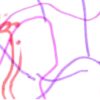
“Metaphors We Dance With” – Floor Mijland
At the last Transmission in Motion seminar, taking place May 26th, 2021, dance researcher Suzan Tunca and assistant professor Laura Karreman discussed the relationship between dance and language, as used in both the studio and academia. Contrary to the common conception of dance, as an artform ‘far removed from language’, Tunca explained the importance of…
Read more
“To Site/Cite Knowledge” – Bernice Ong
In the seminar “Mobilising the Dance Archive: How to Transmit Intuitive Body Knowledge? (26 May 2021)” with Suzan Tunca and Laura Karreman, the question that struck me most was the question of how knowledge is defined? Further to this, what types…
Read more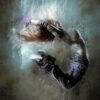
“Transmission of Motion, Transmission in Motion: Some Thoughts about the Use of Written Language for Dance Choreography Notation” – Daniël Everts
The final Transmission in Motion (TiM) seminar of this academic year covered the topic of dance notation and the transference of knowledge pertaining to dance choreography – basically; it was about transmission of motion. Yet, in this final blog post, I would like to focus on an expressive medium that at a glance seems rather stationary: that of written,…
Read more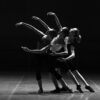
“Archiving and Transmitting Dance Knowledge in the Process” – Liang Yue
During the online seminar “Mobilizing the Dance Archive: How to Transmit Intuitive Body Knowledge?”, Suzan Tunca and Laura Karreman introduced the inspiring notion of “dance knowledge” and how to preserve and transmit this type of knowledge through the “Motion bank.” The “dance knowledge” includes but is not limited to the intelligence in choreographic practice, such…
Read more
“Enactive Metaphors to Ignite the Imagination” – Hymke Theunissen
Metaphors are useful for getting an idea across by creating a shared framework of meaning. As a figure of speech, what Shaun Gallagher and Robb Lindgren (2015) call ‘sitting metaphors’, we can encounter them in text. Ideally, metaphors will make us think and guide our understanding. However, the authors point to a different way of…
Read more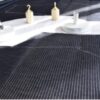
“In Touch with the Here, the Now, the Body and the World: Technologically Mediated Being-in-the-world from a 4EA-cognition Perspective” – Danny Steur
In the case of Lianne Toussaint and Pauline van Dongen, the meeting of an academic and fashion designer led to an ongoing collaboration whose output consists of both creative products and research – two practices that strongly inform and become deeply entangled with one another. In “In Touch with the Now: Stimulating Mindfulness through a…
Read more
“Mask Smart-Design and Capitalism in the Covid-19 Era” – Polyniki Katrantsioti
Throughout 2020, the year that changed the lives of everyone around the world, a new opportunity arose for many companies to take advantage of this situation and therefore profit off of it. At the start of the pandemic, there was a unique shortage of new essential products like masks, antibacterial gels, and any other protective…
Read more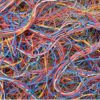
“Wearing Technology: Tackling Complexity Through an Assemblage of Approaches” – Eleonora Stacchiotti
During the seventh meeting of the Transmission in Motion seminar, students and researchers from different backgrounds had the chance to discover and learn more about the intersection of theory and practice in the context of smart clothing research. Fashion designer Pauline van Dongen and Media and Culture scholar Lianne Touissant presented their works. As they…
Read more
“Reading Issho Through Verbeek’s Composite Intentionality” – Anthony Nestel
In a paper titled “In Touch With The Now: Stimulating Mindfulness Through a Smart Denim Jacket” (2019) Pauline van Dongen and Lianne Toussaint delineate the effects that van Dongen’s smart denim jacket called ‘Issho’ produces on embodied experience. With ‘Issho’, they distance themselves from other smart garments that commonly perform as an intermediary between screen…
Read more
“Smart Design and Equine Sports” – Naomi Tidball
“Moving together means working together.” Menke Steenbergen, founder of IPOS Technology. On April 28th, 2021, the Transmission in Motion Seminar hosted a discussion on ‘smart technology’ in fashion with Pauline van Dongen (fashion designer) and scholar Lianne Toussaint (Media and Culture) (Utrecht, 2021). As part of their Ph.D. projects, van Dongen and Toussaint reflect on…
Read more
